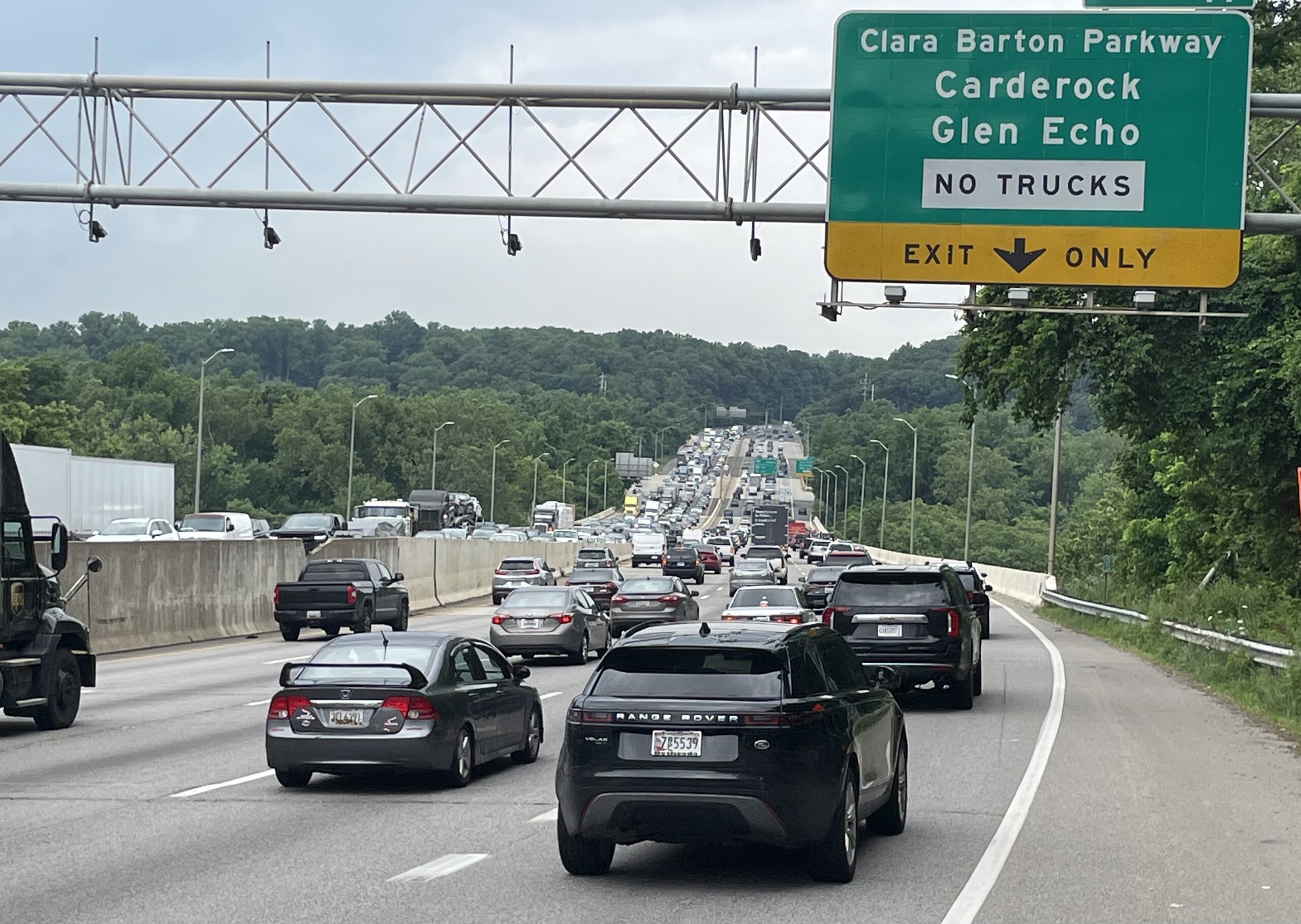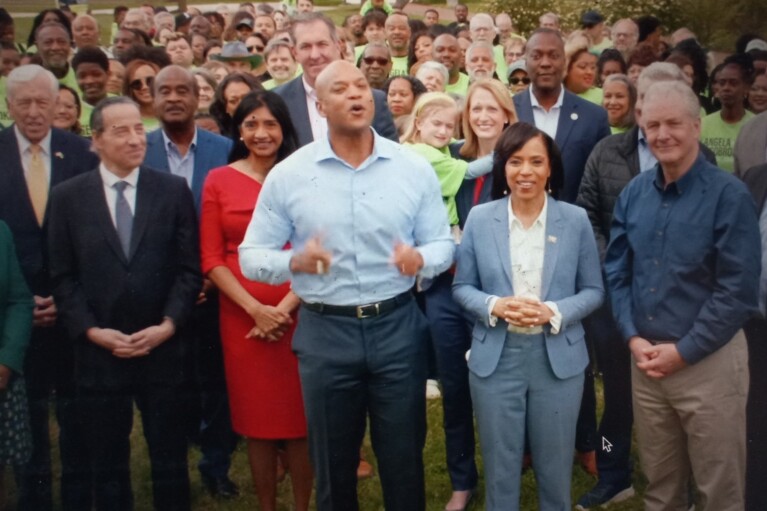After brief delay, feds give key approval to Hogan plan to widen parts of Capital Beltway, I-270

One of Gov. Larry Hogan’s top policy priorities — a plan to relieve traffic snarls along the Capital Beltway and I-270 — got the green light Thursday from a key federal agency.
“This is a major milestone for the most important transportation project for the National Capital Region in the last 50 years. With the Biden administration’s final approval, we are ready to move forward with this transformative project,” the term-limited executive said in a statement.
The Federal Highway Administration issued its “record of decision,” the final step in the National Environmental Policy Act process that spanned more than four years, less than a month after federal officials told the state of Maryland that final action on the $7.6 billion project had been deferred indefinitely.
In an interview with Maryland Matters last month, Hogan (R) said various delays had added 20% to the project’s cost.
“As I emphasized in my discussions with [U.S. Transportation Secretary Pete] Buttigieg, years of federal bureaucratic delays — along with political stall tactics by Montgomery County politicians ignoring the will of their constituents — have significantly increased the costs and hurdles for the project. As a result, we have applied for a federal grant to help in mitigating the costs of these needless delays,” Hogan said in his statement.
The record of decision means the project will become eligible for federal funding and details efforts state and federal highway agencies will make to minimize impacts to properties along the project.
The preferred alternative approved by the Federal Highway Administration would add two new variably priced toll lanes in each direction on the Capital Beltway from south of the George Washington Memorial Parkway in Fairfax County, Va., to west of Old Georgetown Road in Montgomery County.
On I-270, the alternative would convert the existing carpool lane in each direction to a variably priced toll lane, and add a new toll lane in each direction from I-495 to north of I-370.
In contrast to the plan introduced by Hogan five years ago, which would have widened wide swaths of highway in the national capital region, the record of decision does not include any action or improvements on I-495 east of I-270.
The approval does include replacement of the 60-year-old, 10-lane American Legion Bridge, which carries more than 200,000 travelers daily between Maryland and Virginia. The selected alternative creates a shared-use bicycle and pedestrian path on the east side of the bridge, connecting existing trail networks in Maryland and Virginia.
The selected alternative avoids all residential and business displacements and significantly reduces impact on parkland, right of way and other resources within the study area, according to the state and federal highway agencies.
“This interstate project will address one of the worst traffic bottlenecks in the country, create more jobs and opportunities, and expand bike, transit, and pedestrian infrastructure. It is exactly the kind of bold and forward-thinking solution that Marylanders have been crying out for, for years if not decades,” Hogan said.
The federal decision was cheered Thursday by Hogan’s supporters.
“The Biden administration approving this project is a major step forward and finally puts it on the 1-yard line. This is a victory for everyone who cares about Marylanders wasting their lives stuck in traffic and a defeat for the activists who did everything possible to stop this transformative project from moving forward,” said Doug Mayer, a former top Hogan official who now heads Traffic Relief NOW, a group that has advocated for the highway project.
Mayer called the project “one of the most important infrastructure projects in the country” and said supporters have overcome “years of blatant political sabotage and obscure bureaucratic hurdles to get to this point.”
“Now is the time to take the final steps and put this plan fully into motion,” he continued.
As the federal approval process was underway, top officials in Montgomery County and advocates pressed the Federal Highway Administration to delay its decision on the 26,000-page Final Environmental Impact Statement.
Among concerns lodged during the final review process, transit advocate Ben Ross pressed the U.S. Department of Transportation to look into “possible scientific fraud,” after he said he found unexplained changes in the traffic models the state used to determine how much time motorists would save by using toll lanes.
A Federal Highway Administration memo included with the record of decision concluded that an independent review of the claims by the U.S. Department of Transportation’s Volpe National Transportation Systems Center “did not find scientific integrity fraud” in the final impact statement.
However, the report from the Volpe Center said it “could not assess the plausibility or validity” of some traffic adjustments included in the final report and attributed differences between a draft and final report to limitations of the modeling process used by the state department of transportation.
Ross said Thursday that he was disappointed the Federal Highway Administration would issue a decision on the project without further confirmation of the traffic projections.
The project still faces other challenges and it is unclear whether the Hogan administration could guide the project through additional steps before the governor leaves office in January.
Capital Express Mobility Partners, a consortium made up of a large group of Spanish firms, has challenged the state’s multi-million-dollar “pre-development” contract for the project with Accelerate Maryland Partners, a firm led by the Australian toll road operator Transurban, and an appeal in the case is scheduled to be heard in November.




 Creative Commons Attribution
Creative Commons Attribution